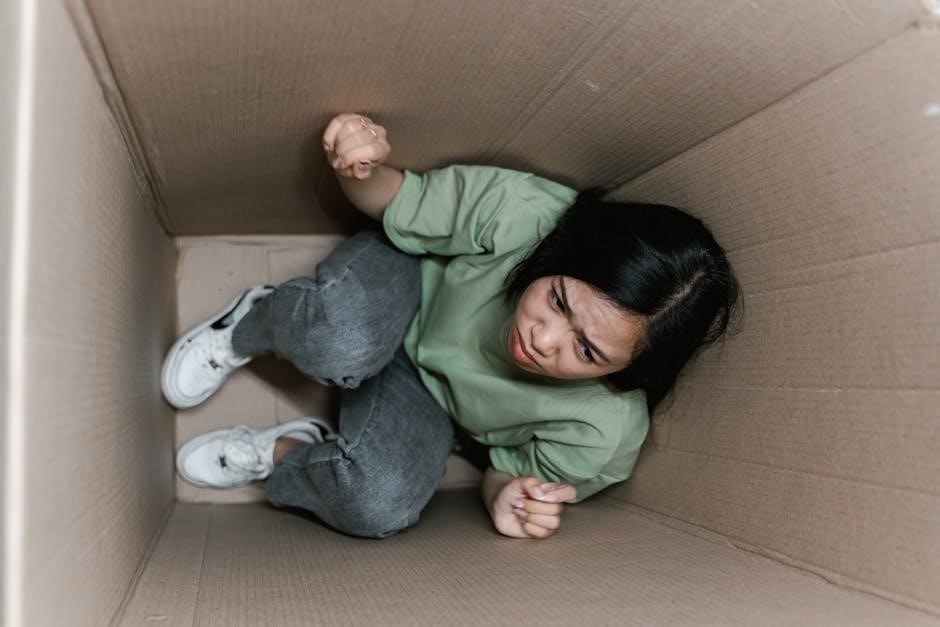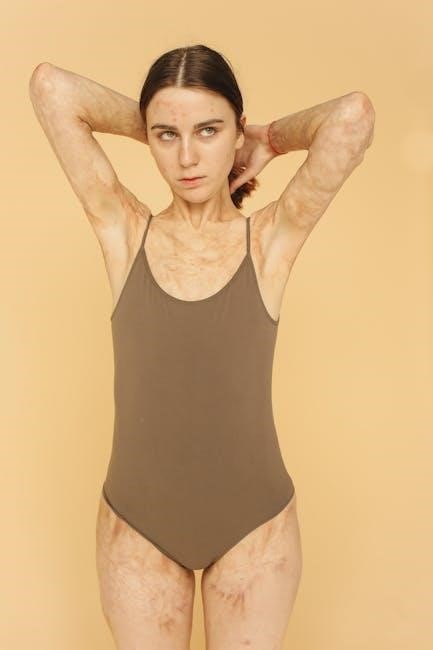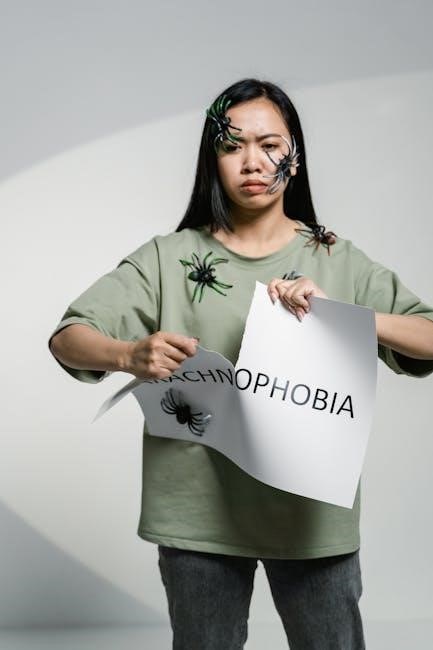Understanding Internalized Homophobia
Internalized homophobia refers to the absorption of societal homophobic attitudes, leading to self-hatred and shame. It stems from external prejudices and can deeply impact self-perception and mental well-being.
Definition and Origins
Internalized homophobia is the absorption of societal homophobic attitudes, leading individuals to harbor self-hatred and shame. It originates from external prejudices, often rooted in upbringing, cultural norms, and institutionalized discrimination. Growing up in environments that condemn homosexuality, many LGBTQ+ individuals internalize these messages, viewing themselves through a lens of societal disapproval. This deeply ingrained self-rejection stems from prolonged exposure to heteronormative values and homophobic ideologies, shaping negative self-perceptions and mental health challenges. Understanding its roots is essential for addressing its profound impact.
The Impact of Societal Homophobia on Self-Perception
Societal homophobia profoundly shapes self-perception, often leading to internalized shame and self-doubt. Growing up in environments that condemn homosexuality, individuals may adopt negative views of themselves, fostering low self-esteem and self-worth. Persistent exposure to prejudice reinforces feelings of inadequacy, making it difficult to embrace one’s identity. This internal conflict can result in self-isolation and a struggle to reconcile personal authenticity with societal expectations, highlighting the deep emotional toll of external homophobia on inner self-perception and mental well-being.

Recognizing the Signs of Internalized Homophobia
Common signs include self-hatred, shame, and avoidance of LGBTQ+ communities. Negative self-talk and difficulty accepting one’s identity often accompany internalized homophobia, reflecting deep-seated societal influences.
Self-Hatred and Shame
Self-hatred and shame are common manifestations of internalized homophobia, often rooted in societal prejudice. Individuals may feel unworthy or guilty due to their sexual orientation, leading to emotional distress. These feelings can stem from religious or cultural beliefs that condemn homosexuality, causing internal conflict. Self-hatred may express as self-criticism or self-destructive behaviors, while shame can result in secrecy or hiding one’s true identity. Addressing these emotions is crucial for healing and fostering self-acceptance.
Avoidance of LGBTQ+ Communities
Avoidance of LGBTQ+ communities is a common sign of internalized homophobia. Individuals may distance themselves due to feelings of shame or fear of being judged. This avoidance can stem from societal homophobia, leading to a sense of not belonging. It often results in isolation, exacerbating mental health challenges like loneliness and self-doubt. Such behavior can prevent individuals from seeking support and forming meaningful connections, further perpetuating internalized negative beliefs about their identity and worthiness of acceptance.

The Psychological Effects of Internalized Homophobia
Internalized homophobia can lead to severe mental health issues, including anxiety, depression, and low self-esteem. It often results in self-destructive behaviors and emotional turmoil, hindering personal growth and relationships.
Mental Health Challenges
Internalized homophobia often manifests as anxiety, depression, and low self-esteem. It can lead to self-hatred, shame, and self-destructive behaviors, worsening mental health. Many individuals struggle with feelings of inadequacy and isolation, further exacerbating emotional distress. The internalized negative beliefs can create a cycle of self-doubt, making it difficult to form healthy relationships or embrace one’s identity. Addressing these mental health challenges requires acknowledgment and targeted support to break the cycle of internalized homophobia.
Strained Relationships
Internalized homophobia can lead to strained relationships, as individuals may struggle with trust, intimacy, and fear of rejection. Self-hatred and shame often create barriers, making it difficult to form authentic connections. Some may distance themselves from others or sabotage relationships due to deep-seated beliefs of unworthiness. This cycle of isolation can reinforce feelings of loneliness and disconnection, further complicating efforts to build meaningful relationships and fostering a sense of alienation from others.

Strategies for Overcoming Internalized Homophobia
Overcoming internalized homophobia involves self-reflection, education, and seeking support. Challenging negative beliefs and embracing one’s identity are key steps toward healing and self-acceptance.
Practicing Self-Compassion
Practicing self-compassion involves treating oneself with kindness and understanding, especially when confronting internalized homophobic beliefs. It requires acknowledging the pain caused by societal prejudice and replacing self-criticism with acceptance. By embracing one’s true identity and validating emotions, individuals can gradually diminish shame and foster a more loving relationship with themselves. This process is not instantaneous but evolves through patience, self-awareness, and gentle reaffirmation of one’s worth. Over time, self-compassion becomes a powerful tool for healing and reclaiming self-esteem.
Building a Support Network
Building a support network is crucial for overcoming internalized homophobia. Surrounding oneself with understanding individuals, whether friends, family, or LGBTQ+ groups, fosters a sense of belonging and validation. Professional guidance from therapists or counselors can also provide structured support. Engaging in community activities or advocacy work helps reconnect with others who share similar experiences, reducing feelings of isolation. A strong support system encourages self-acceptance, empowering individuals to challenge internalized beliefs and embrace their authentic selves with confidence and resilience.

Challenging Internalized Beliefs
Challenging internalized beliefs involves identifying and questioning negative thoughts rooted in societal homophobia. Reflecting on their origins and reframing them positively fosters self-acceptance and personal growth, reducing self-hatred.
Identifying and Questioning Negative Thoughts
Identifying negative thoughts involves recognizing patterns of self-criticism tied to internalized homophobia. Reflect on their origins, such as societal messages or upbringing, and assess their validity.
Questioning these thoughts can reveal their harmful impact and lack of truth. Journaling or mindfulness practices can help individuals track and challenge such beliefs.
By examining and disputing negative self-perceptions, individuals can gradually reduce their influence and foster a more compassionate self-view, ultimately weakening internalized homophobia’s grip.
Reframing Perspective
Reframing perspective involves shifting from negative self-views to a more positive, affirming identity. This process requires acknowledging harmful societal narratives and challenging their validity.
Techniques like cognitive restructuring can help replace self-critical thoughts with compassionate ones. Visualizing oneself in a positive, accepting light fosters resilience.
By embracing LGBTQ+ culture and rejecting internalized shame, individuals can develop a healthier, more empowered sense of self, reducing the grip of internalized homophobia.

The Role of Professional Help
Professional help, such as therapy and counseling, provides a safe space to address internalized homophobia. Therapists offer tools to challenge harmful beliefs and foster self-acceptance, aiding healing.
Therapy and Counseling
Therapy and counseling are essential tools for addressing internalized homophobia. Trained therapists create a safe, non-judgmental space to explore and challenge harmful beliefs. They help individuals identify and reframe negative thought patterns rooted in societal homophobia, fostering self-acceptance and emotional healing. Through evidence-based approaches like cognitive-behavioral therapy, individuals can develop healthier self-perceptions and coping strategies. Therapy also provides guidance in navigating relationships and building resilience against external prejudices, empowering individuals to live authentically and embrace their true selves with confidence and pride.
Support Groups
Support groups provide a collective space for individuals to share experiences and heal from internalized homophobia. These groups foster connection and understanding, helping participants feel less isolated. Sharing stories and challenges with others who face similar struggles can validate emotions and build empathy. Support groups often empower individuals to reframe their identity positively, offering practical tools for self-acceptance. They also serve as a platform to address societal homophobia collectively, promoting personal and communal healing through shared experiences and mutual support.

Cultivating Self-Acceptance
Cultivating self-acceptance involves embracing your true identity and rejecting harmful societal views, fostering self-worth and resilience to overcome internalized homophobia and shame.
Embracing Identity
Embracing your identity is a powerful step in overcoming internalized homophobia. It involves accepting and valuing your true self, moving from shame to pride. Recognizing the validity of your feelings and experiences helps counteract harmful societal messages. Connecting with LGBTQ+ communities and culture can provide strength and belonging. Self-acceptance fosters resilience, allowing individuals to reclaim their identity and live authentically, free from the weight of internalized negativity.
Celebrating LGBTQ+ Culture
Celebrating LGBTQ+ culture is a vital part of healing from internalized homophobia. Engaging with art, history, and traditions that honor LGBTQ+ identities fosters pride and connection. Participating in events like Pride parades or community gatherings helps counteract feelings of shame. Embracing cultural heritage can empower individuals to reclaim their identities and feel a sense of belonging. This celebration not only promotes self-acceptance but also strengthens resilience against societal homophobia, creating a pathway to liberation and joy.

The Importance of Societal Change
Societal change is crucial for combating internalized homophobia. Education and awareness campaigns can reduce prejudice, fostering inclusive environments and promoting acceptance of LGBTQ+ individuals.
Advocating for LGBTQ+ Rights
Advocating for LGBTQ+ rights is essential to combat internalized homophobia. By promoting equality and challenging stereotypes, societal attitudes shift, reducing prejudice. Supporting inclusive policies, educating communities, and amplifying marginalized voices fosters acceptance. Advocacy helps create environments where individuals can embrace their identities without shame, addressing the root causes of internalized homophobia and empowering LGBTQ+ individuals to thrive.
Education and Awareness

Education and awareness are critical in addressing internalized homophobia. By challenging stereotypes and promoting accurate representations, individuals can gain a deeper understanding of LGBTQ+ experiences. Educational programs, workshops, and media representation help dismantle harmful myths and foster empathy. Raising awareness about the effects of societal homophobia encourages personal reflection and growth. Empowering individuals with knowledge enables them to confront and overcome internalized shame, fostering a more inclusive and accepting environment for all.




Be the first to reply